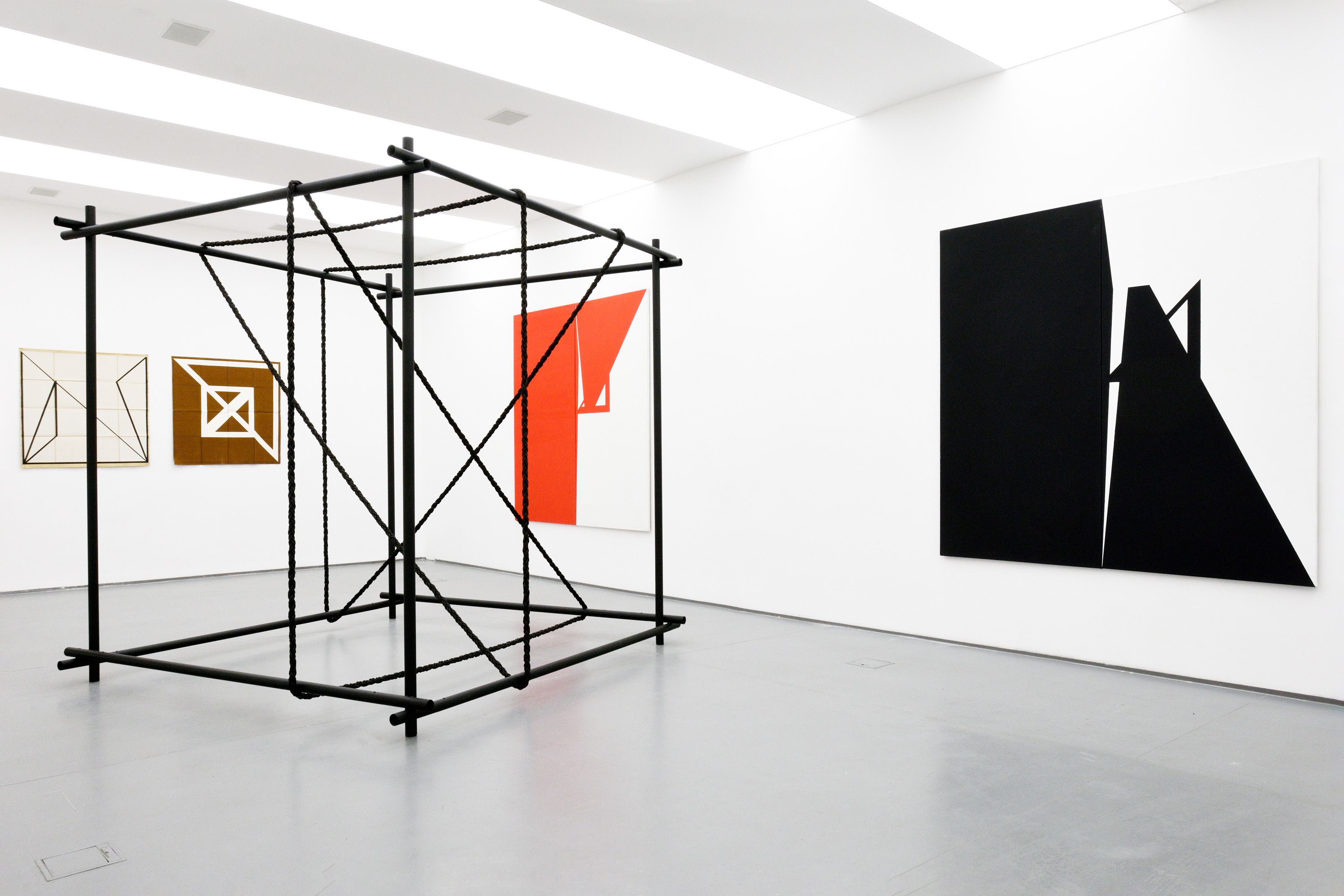Károly Hopp-Halász
High Stand
| Venue: | acb Gallery |
| Date: | Sep 08 – Oct 27, 2016 |
Description
The artistic career of Károly Halász (b. 1946) was kick-started by his period as member of the Pécs Workshop (1969-1980). It was in this collective atmosphere that he found his singular voice, coupling his formal language rooted in nature with the influence of international trends and artists he had taken great interest in throughout his high school years – most importantly Op Art and Vasarely – and his geometrical vision that had emerged as a result, not to mention the skill of designing ornaments and patterns acquired during his ornamental design studies, the geometrical language and thinking learned from Ferenc Lantos, and the experimental nature of the actions carried out with the other members of the Workshop (Ferenc Ficzek, Károly Kismányoky, Sándor Pinczehelyi and Kálmán Szíjártó). These were the origins of the developments in Halász’ art throughout the seventies, as a result of which he could construct an oeuvre that is multi-faceted both thematically and in terms of media, merging painting with graphic art and sculpture as well as installation, action art, performance, body art, video and film. However – in contrast with other members of the Pécs Workshop, painting remained the dominant genre in Halász’ oeuvre, with special regard to the endeavour of rendering geometrical elements personal through the myth of geometry.
He began working on the High Stand series in this early period, for the 1972 Balatonboglár chapel exhibitions, to which he was invited along with the rest of the Pécs Workshop. The group intended to react on the natural environment of the chapel, and under the fitting title of Landscape Correction, the five artists created five different landscape interventions. The contribution by Halász was a square-shaped metal frame outdoors, with colourful strips of canvas stretched across it, forming a two-dimensional sculpture in the chapel’s courtyard. By reducing the structure of a hunter’s high-Stand geometrically, the piece apparently investigated issues concerning the relation of geometry and nature. In that specific environment, however, the composition, through the junction of its vertical, horizontal and diagonal lines, created such sense of insecurity and tension that endowed the work with the ontologically depressing atmosphere of the era. The title of the piece – High Stand – was also not devoid of references to the cultural political and aesthetic hunt characterizing the period, as well as the dangerous nature of the events held in Balatonboglár, under constant surveillance by the secret police. Alluding to Kassák’s image architecture, not only did Halász pay tribute to the constructivist heritage but he also reflected the modern endeavours of constructivism, which were gaining ground in contemporary Hungarian painting through the works of Imre Bak and István Nádler.
The series he has developed since then systematically and analytically articulate, deconstruct and recombine various elements of the high stand in different two- and three-dimensional objects – paintings, graphics, plastic art – and colour variations – mainly orange, grey, black, brown, red and blue. This logical image construction and the constricted segmentation of the frame, as well as the strained diagonals, horizontals and verticals all keep endowing the constructions with an unsettling feeling of uncertainty and imbalance. As if these pieces were transubstantiated into monuments of infinite waiting, watching and vigilance.
acb Gallery is the first to present a selection that focuses exclusively on Károly Halász’ High Stand series while exploring its diversity and wealth of media, reflecting the experimental use of different materials, so characteristic of the artist’s oeuvre. The issues engaging Károly Halász to this day, related to geometry, constructivism or planar and spatial problems of form, unfold through graphics and paintings on industrial canvas, two- and three-dimensional sculptures and a metal sculpture originally exhibited in 1972 in Balatonboglár and in 1978 in Pécs, now reconstructed for the exhibition.

